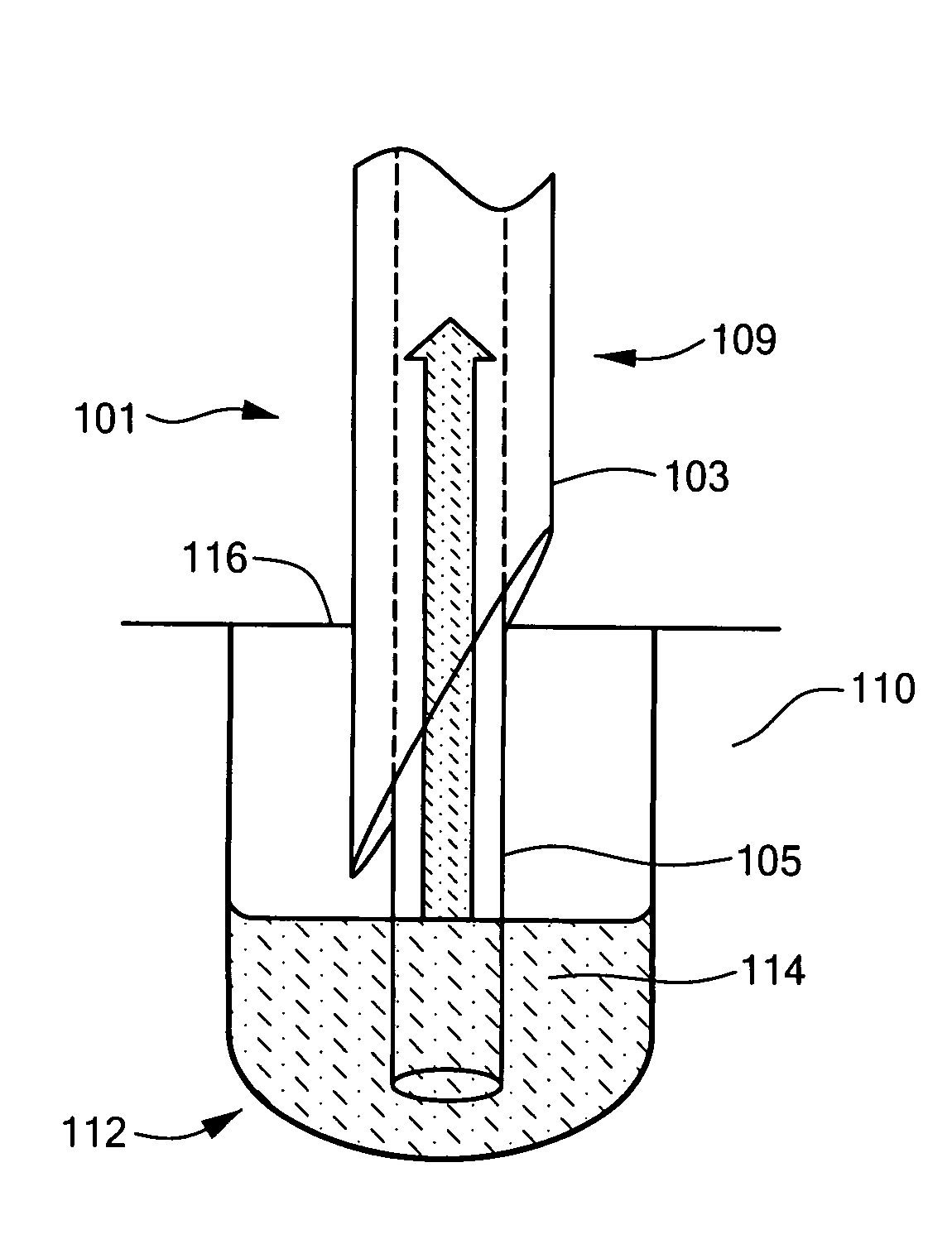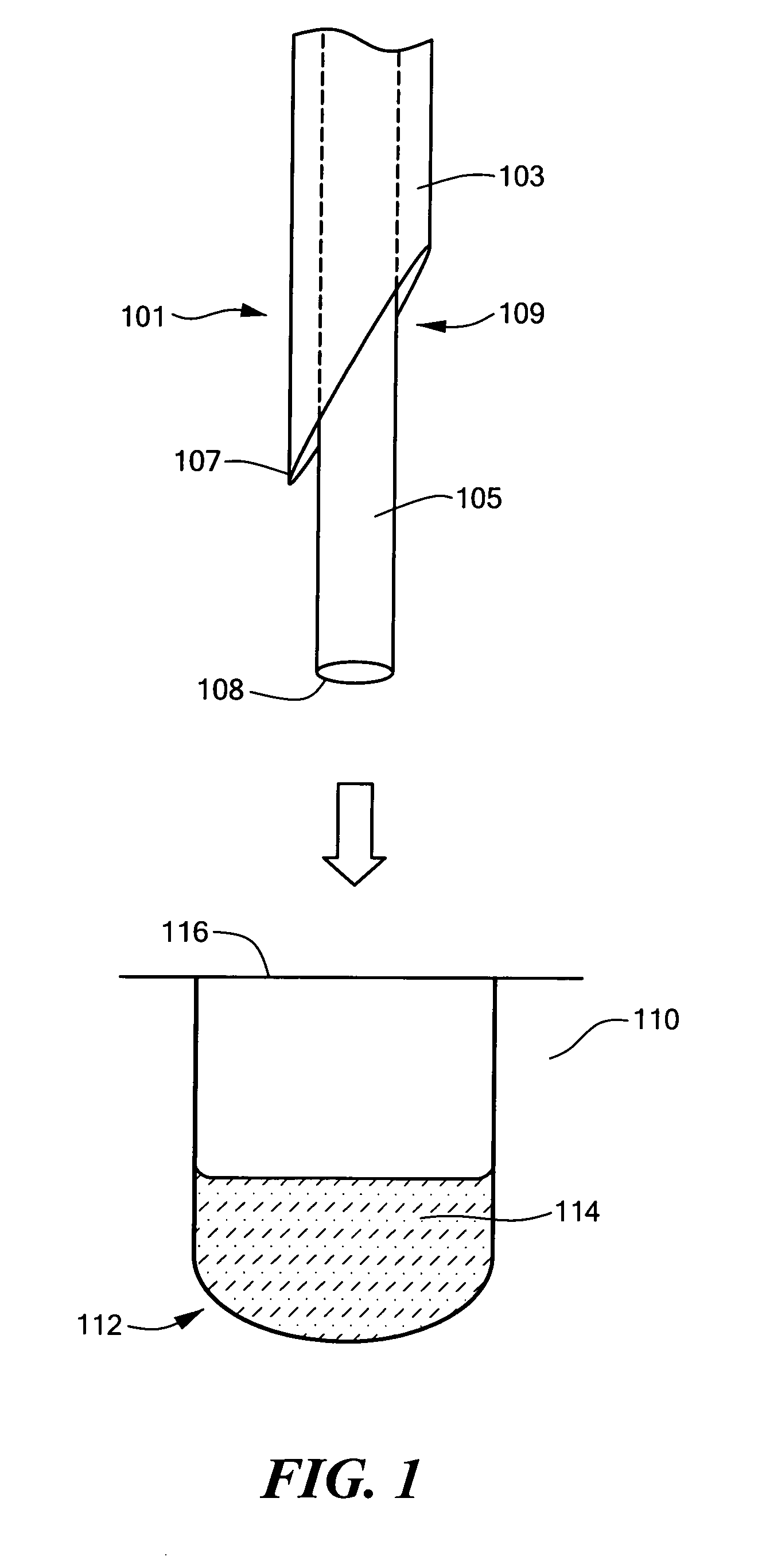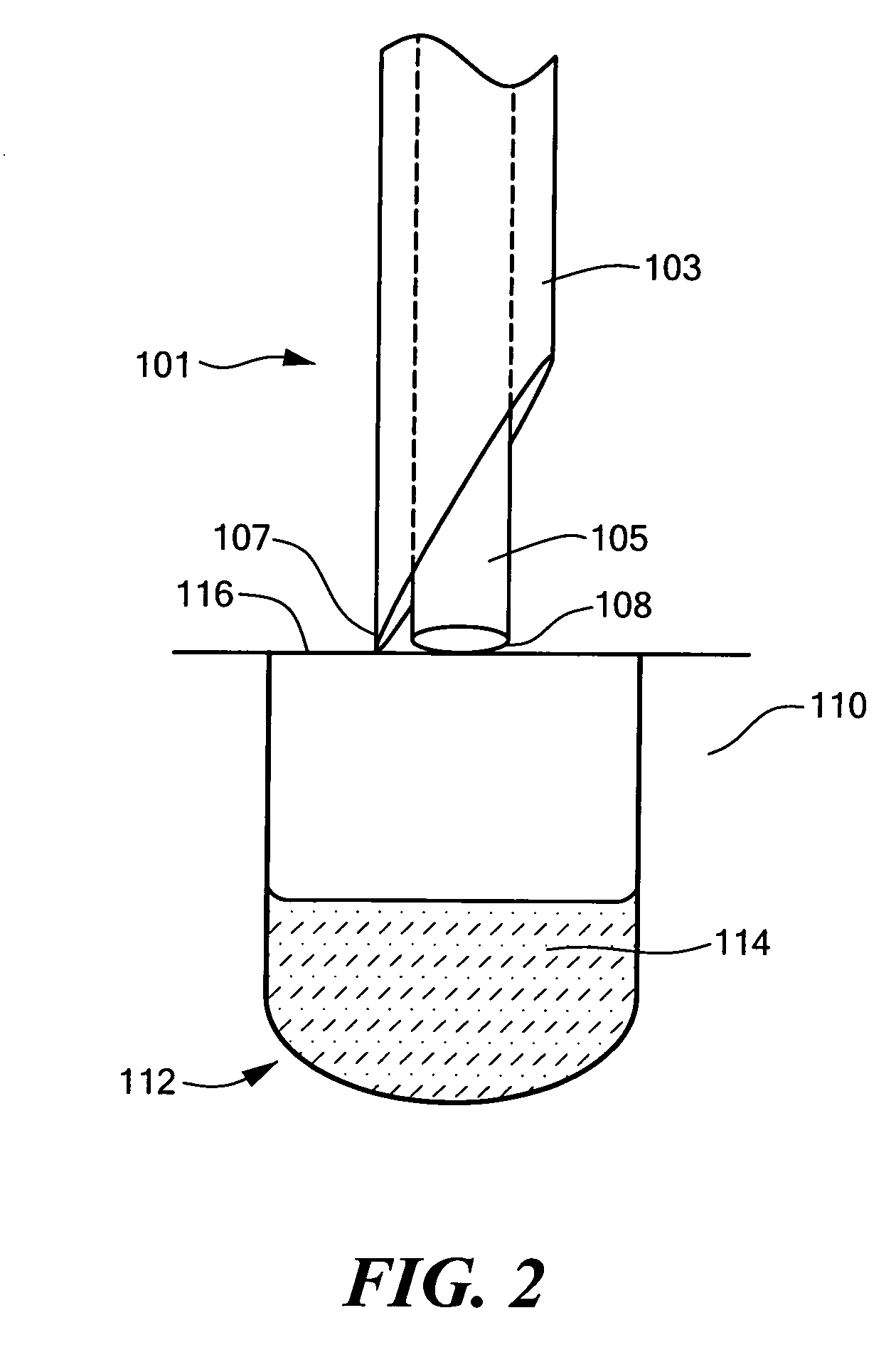Concentric tube microplate autosample interface
a microplate and concentrate tube technology, applied in sampling, laboratory glassware, instruments, etc., can solve the problems of inability to chemically compatible tubes, tube made of a material capable of puncturing the seal covering the well, and tube made of stainless steel, etc., to achieve the effect of reducing the number of tubes
- Summary
- Abstract
- Description
- Claims
- Application Information
AI Technical Summary
Benefits of technology
Problems solved by technology
Method used
Image
Examples
Embodiment Construction
[0022]In illustrative embodiments, a system and method for transferring a sample from a volume closed by a seal is presented. Generally, the system includes a tube assembly having an outer tube and an inner tube. The inner tube includes an end region axially movable within the outer tube, such that the outer tube can be used to pierce the seal, while the inner tube can be used for contacting and transferring the sample from the volume. Consequently, the inner tube can advantageously have a small diameter and be made of a bio-inert substrate that, while not capable of piercing the seal, adsorbs very little sample. Sample carryover and the time required to wash the tubing prior to transfer of the next sample can thus be minimized. Details are discussed below.
[0023]FIG. 1 shows a tube assembly 101 approaching a container 110, in accordance with one embodiment of the invention. The container 110 defines at least one volume capable of containing a sample 114 to be aspirated. In various e...
PUM
| Property | Measurement | Unit |
|---|---|---|
| volume | aaaaa | aaaaa |
| diameter | aaaaa | aaaaa |
| diameter | aaaaa | aaaaa |
Abstract
Description
Claims
Application Information
 Login to View More
Login to View More - R&D
- Intellectual Property
- Life Sciences
- Materials
- Tech Scout
- Unparalleled Data Quality
- Higher Quality Content
- 60% Fewer Hallucinations
Browse by: Latest US Patents, China's latest patents, Technical Efficacy Thesaurus, Application Domain, Technology Topic, Popular Technical Reports.
© 2025 PatSnap. All rights reserved.Legal|Privacy policy|Modern Slavery Act Transparency Statement|Sitemap|About US| Contact US: help@patsnap.com



